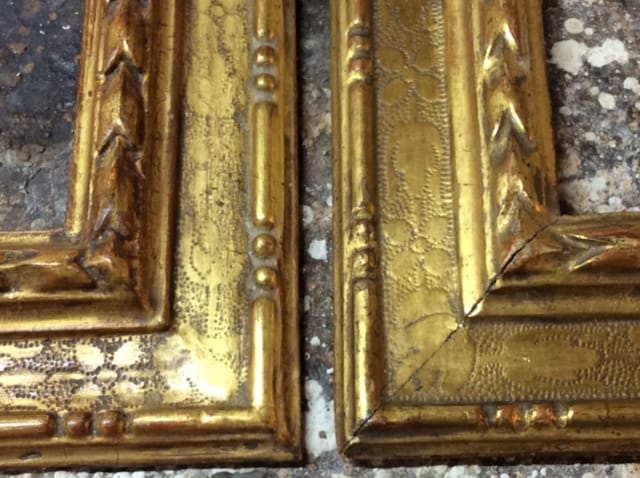“Discover the art of HANDMADE REPLICA FRAMES from Florence, where history and craftsmanship meet to showcase your most treasured pieces beautifully.”
Ever felt like a store-bought frame just doesn’t capture the essence of your favorite artwork or heirloom? For many, the right frame does more than hold a piece—it completes it. That’s where handmade replica frames come in. Crafted with precision and care, these frames honor traditional methods and materials to create something truly unique. At Julia Markert’s Florence workshop, each frame is tailored to elevate your art and reflect its story. This guide explores why these frames matter, how they’re made, and how to choose the perfect match for your art and space.
Here’s how to approach handmade replica frames:
- The Value of Handmade Replica Frames
- Using Traditional Materials and Techniques
- Why Historical Methods Matter
- Customizing Frames for Artwork Harmony
- Matching Frames to Your Space
- The Craftsmanship Behind Every Frame
- How Handmade Frames Stand the Test of Time
- Frames as Historical and Artistic Statements
- Working with a Florentine Artisan Like Julia Markert
Each section offers insights into how these frames blend artistry and function while preserving history.
Keep reading to uncover what makes handmade replica frames special—from the timeless techniques used to the way they transform your art into a centerpiece for any space.
1. The Value of Handmade Replica Frames
A handmade replica frame isn’t just a decorative element; it’s an extension of the artwork itself. Unlike factory-made options, these frames are crafted to echo a specific time or region, making them rich in character. Whether it’s a gilded Renaissance frame or a simple rustic design, each piece tells a story that enhances the art it surrounds.
Choosing such a frame bridges the past and the present, connecting your art with a heritage of craftsmanship. More than just functional, these frames have a personality, with intricate details, aged patinas, and finishes that make them stand out. They work beautifully with both classic and modern interiors, offering warmth and sophistication that mass-produced alternatives can’t match.
Beyond their aesthetic appeal, handmade frames can enhance the perceived value of your artwork. A thoughtfully chosen frame complements the art’s theme and creates a sense of exclusivity. It’s about more than decoration; it’s about giving your piece the setting it deserves, allowing the story to continue beyond the canvas.
2. Using Traditional Materials and Techniques
The charm of handmade replica frames lies in their authenticity, which starts with the materials. Woods like poplar or linden are often chosen for their durability and ease of carving, ensuring the frame has a strong foundation. In Julia Markert’s workshop, every detail—from the type of wood to the adhesives used—aligns with historical practices.
The process begins with layers of gesso applied to the wood, creating a smooth base for intricate details. For gilded frames, thin sheets of gold or silver leaf are carefully applied by hand, adding a soft, luminous finish. Techniques like burnishing and antiquing bring out the richness and depth of these materials, making the frames feel as if they’ve been pulled straight from a bygone era.
Traditional methods aren’t just about aesthetics—they’re about longevity. Natural adhesives and finishes, like those used centuries ago, ensure the frame remains durable. Each step in the process is designed to create a lasting piece that complements your art and stands the test of time.
3. Why Historical Methods Matter
In a world of shortcuts, traditional frame-making techniques remain invaluable. These methods honor the craftsmanship of the past, bringing authenticity to every detail. For example, water gilding, a centuries-old process, creates a soft, glowing finish that feels alive, unlike the flat, shiny surfaces of modern alternatives.
Using historical techniques also preserves the structural integrity of the frame. Artisans spend hours carving, sanding, and finishing the wood to ensure it ages beautifully. Each layer of paint, gesso, or gilding is applied with care, building up a piece that feels both substantial and elegant.
The result is a frame that’s not just a border but a statement. When paired with artwork, it creates a cohesive story, blending the piece’s history with its presentation. For those who appreciate the finer details, these methods bring a level of artistry and respect for tradition that’s hard to find elsewhere.
4. Customizing Frames for Artwork Harmony
Creating the perfect frame involves more than picking a style—it’s about finding harmony between the frame, the artwork, and the space. Julia Markert works closely with clients to achieve this balance, considering everything from the art’s theme to its color palette.
For example, a Renaissance portrait might call for a gilded, ornate frame, while a minimalist painting might benefit from a simpler, understated design. The color and finish of the frame are equally important. Warm golds, cool silvers, or soft antique patinas can highlight different elements of the artwork, drawing the eye where it matters most.
Proportions also play a key role. A frame that’s too bulky can overshadow the art, while one that’s too thin might fail to make an impact. Julia’s expertise ensures the frame feels like a natural extension of the piece, creating a seamless presentation that elevates both.
5. Matching Frames to Your Space
A frame isn’t just about the art—it’s also about where it will live. The right frame can tie together your space, acting as a bridge between the artwork and the room’s overall design. Whether your home leans traditional, modern, or somewhere in between, a handmade replica frame can adapt to suit your style.
For classic interiors, an ornate, gilded frame might echo the elegance of antique furniture. In contrast, a more contemporary space might benefit from a subtle, well-crafted frame that lets the artwork take center stage. Julia helps clients consider these factors, offering guidance on how the frame can enhance not just the art but the room as a whole.
Lighting is another consideration. Frames with rich textures and reflective finishes can catch natural light beautifully, adding depth to your space. Meanwhile, matte finishes or aged patinas might suit dimly lit areas, offering a softer, more intimate look.
6. The Craftsmanship Behind Every Frame
Creating a handmade frame requires skill, patience, and an eye for detail. Julia Markert and artisans like her dedicate years to mastering techniques like carving, gilding, and distressing. Every step, from shaping the wood to applying the final finish, is done with care and precision.
The true mark of craftsmanship lies in adaptability. Whether recreating a Baroque design or experimenting with a custom finish, skilled artisans bring a wealth of knowledge to the table. Their work doesn’t just replicate history—it breathes life into it, making each frame feel relevant and timeless.
This expertise extends beyond the workshop. Julia collaborates with clients, helping them make informed decisions about materials, styles, and finishes. The result is a piece that’s not only beautifully crafted but deeply personal, reflecting the client’s vision as much as the artisan’s skill.
7. How Handmade Frames Stand the Test of Time
Durability is just as important as beauty when it comes to frames. Handmade replica frames, crafted with traditional materials and methods, are built to last. Over time, the natural materials used—such as seasoned wood and organic finishes—age gracefully, developing character without losing integrity.
What sets these frames apart is their ability to evolve with the art. Slight variations in patina or minor cracks in the gesso can add to their charm, echoing the wear and tear of true antiques. This kind of aging enhances their authenticity, making them feel even more special as the years go by.
Collectors and art enthusiasts also value the reliability of these frames. Unlike mass-produced options, handmade frames can be easily repaired or refreshed, ensuring they continue to protect and enhance your artwork for generations.
8. Frames as Historical and Artistic Statements
Every handmade replica frame tells a story. For art from a specific period, the frame can reinforce its historical context, creating a deeper connection to its origins. A Rococo-inspired frame, for example, can transport viewers to 18th-century Europe, enhancing their appreciation of the piece.
But these frames aren’t just about matching history—they’re about elevating art. Subtle motifs, colors, or textures can complement the artwork’s theme, creating a cohesive narrative. Even modern art can benefit from a well-chosen vintage-style frame, introducing a striking contrast that draws the eye.
Whether you’re curating a gallery wall or highlighting a single piece, a handmade replica frame becomes more than an accessory. It’s part of the artwork’s story, a testament to the craftsmanship and history behind both the art and the frame itself.
9. Working with a Florentine Artisan Like Julia Markert
Collaborating with Julia Markert is more than a transaction—it’s a creative partnership. From the first consultation, she takes the time to understand your artwork, preferences, and vision. Her process combines expertise with a personal touch, ensuring every frame feels as unique as the piece it holds.
Julia’s workshop in Florence is steeped in tradition, drawing inspiration from the city’s rich artistic heritage. She guides clients through every step, from selecting materials to choosing the perfect finish, ensuring the final product aligns with their goals.
The result? A frame that doesn’t just hold your art—it enhances it, reflecting the craftsmanship and care that went into every detail. Working with Julia means investing in a piece of Florence’s artistic legacy, tailored just for you.
FAQ
Are handmade replica frames worth it?
Absolutely. They combine authentic materials, expert craftsmanship, and timeless design.
How do I choose the right frame for my art?
Think about the art’s style and theme, and look for a frame that complements its character.
Do traditional techniques make frames last longer?
Yes, they use durable materials like seasoned wood and natural finishes for longevity.
Can I customize the frame’s finish?
Of course! Artisans like Julia work with you to create the perfect look.
Is international shipping an option?
Yes, with careful packaging, handmade frames can be shipped safely worldwide.
Conclusion
Handmade replica frames do more than frame your art—they elevate it, connecting it to a rich tradition of craftsmanship. By blending historical methods with personal touches, artisans like Julia Markert create pieces that enhance the beauty of your artwork and the space it occupies. Whether you’re preserving a family heirloom or showcasing a modern masterpiece, these frames offer a timeless solution that’s as unique as the art itself.





